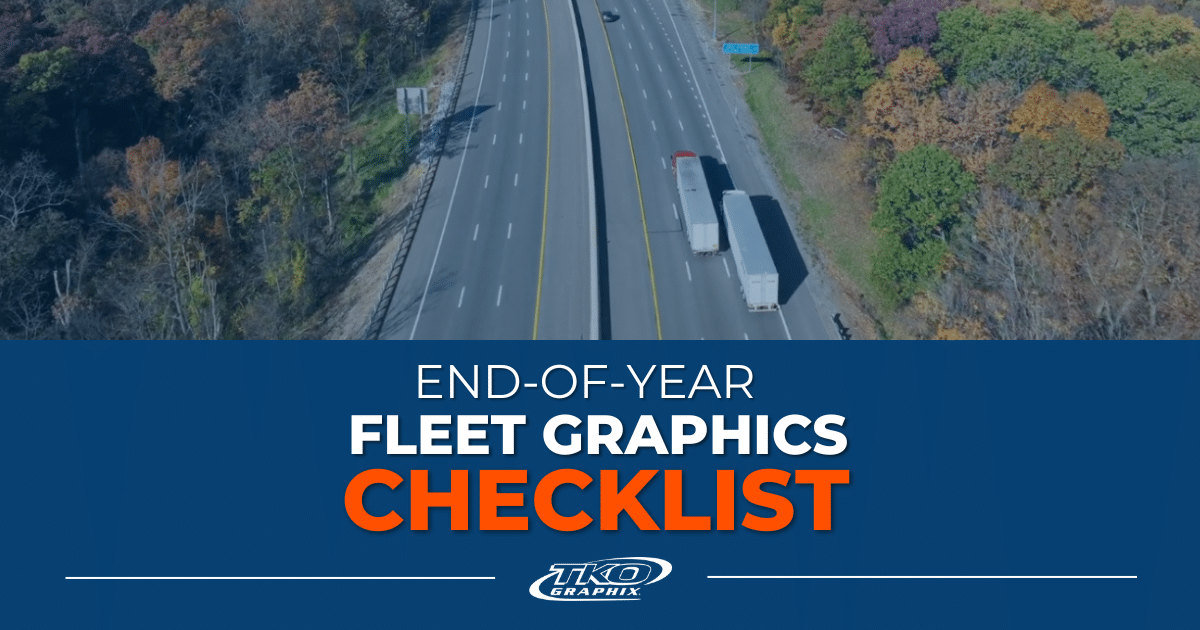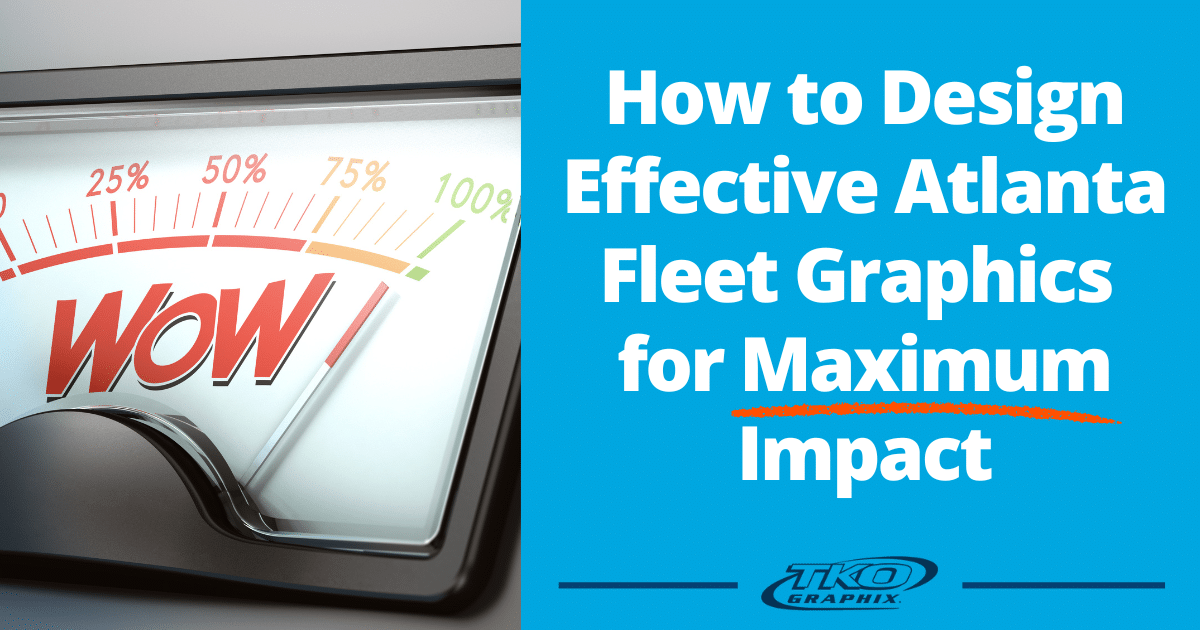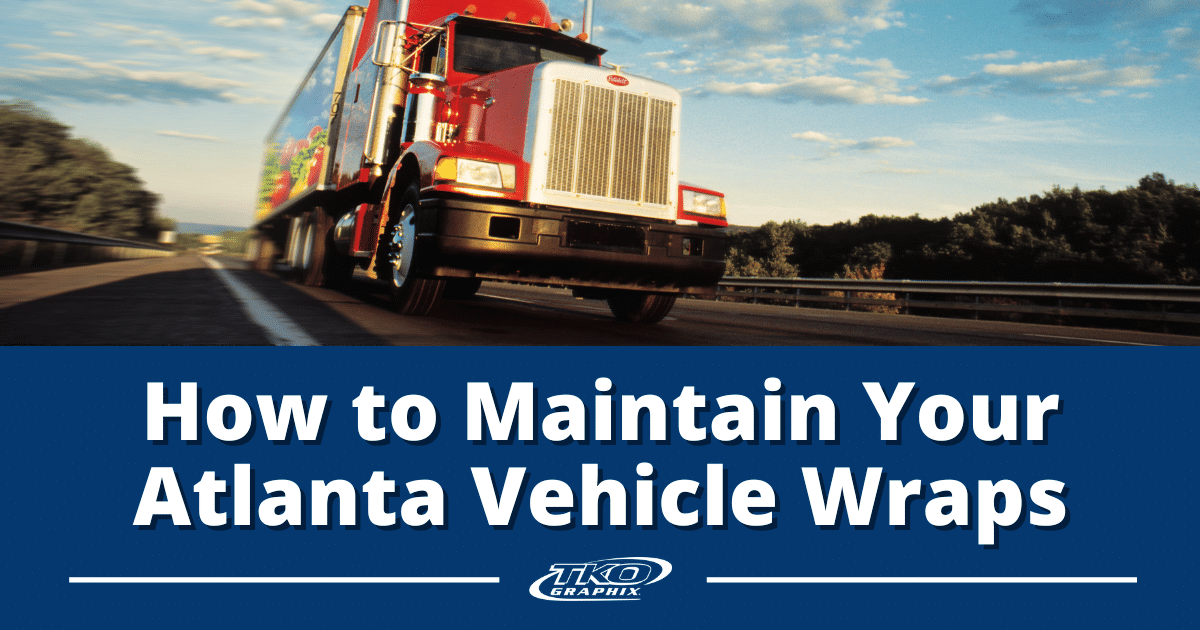Yes, design elements can make or break fleet graphics. We’ve often referred to fleet graphics as rolling billboards, and in the sense that fleet graphics are an opportunity to share a message, this is true. However, there are vast differences between a billboard, and a moving vehicle. First, a fleet vehicle isn’t one-dimensional. 53-foot trailers may have flat surfaces, but they still have two sides and a rear.
Fleet vehicles are three dimensional, some with complex curves. And secondly, billboards do not travel at 55 MPH. Fleet graphics only have seconds to capture a consumer’s attention. There are several critical differences in fleet graphic design from other forms of graphic design and these design elements can make or break fleet graphics.
Whether a consumer is driving, or walking in a business district, there are thousands of messages fighting for their attention, signs, billboards, and fleet graphics come at people in droves. It’s impossible to take them all in, and even the best only receives seconds of anyone’s attention. Sometimes vehicles with fleet graphics are parked, but the wrap should be designed to be viewed at 55 MPH. You have seconds, only seconds.
A billboard could be effective with poor design elements, and a confused hierarchy because people often have time to “figure it out” but not a vehicle graphic. More than any other type of graphic design elements can make or break fleet graphics. So, before we dive into design elements, let’s review the design hierarchy.
Before setting vehicle graphic design hierarchy in order, an organization must consider what messages take precedence, what is the hierarchy of your messages? What do you want to communicate, and what do you want people to understand about your business? Consider the following.
- Logo
- Branding
- Tag Lines and Message
- Products and Services
- CTA (Call to Action)
- USP (Unique Sales Position)
- Contact Information
How Design Elements Can Make or Break Fleet Graphics
Size
“It’s generally accepted that stationary signs can be seen, when unhindered, from set distances. For example, ADA Accessibility Guidelines state that 3-inch letters may be seen up to 25 feet away and 6-inch letters 35 feet or more. But what happens if the “sign” is moving at 55 MPH on the side of a fleet vehicle?
The USSC (United States Sign Council) uses a formula to determine the optimum signage square footage required for a sign to be seen by moving cars. “It is calculated by first converting travel speed in miles per hour (MPH) to feet per second (FPS) by using the multiplier 1.47, and then multiplying the feet per second by the Viewer Reaction Time.
For example, a vehicle traveling at sixty miles per hour covers eighty-eight feet per second (60 x 1.47 = 88). Eighty-eight feet per second times a Viewer Reaction Time of ten seconds equals eight hundred eighty feet (880) of Viewer Reaction Distance. The computation can be expressed also as this equation: VRD = (MPH) (VRT) 1.47 Determining Letter Height and Sign Size.” This will vary by road complexity. But what if the buying public and the sign are both moving? It’s complicated, but here are a few key design elements to consider.
Color
According to Psychology Today, “…researchers found that up to 90% of snap judgments made about products are based on color alone (depending on the product) … Color is ubiquitous and is a source of information. People make up their minds within 90 seconds of their initial interactions with either people or products. About 62‐90 percent of the assessment is based on colors alone.”
Design elements can make or break fleet graphics, especially color. Colors can inform your audience as to your industry. Have you ever noticed that most fast-food restaurants use a combination of red and yellow or that financial institutes use primarily blue and green? Using a color palette inappropriate for your industry can send the wrong message. And it’s important that fleet graphics are part of the overall marketing campaign. They should reflect the image presented through other media by supporting branded colors.
The color palette on vehicle graphics is one of the most important ingredients of a successful vehicle wrap. There’s a lot to consider when discussing vehicle graphics color, and the psychology of color is one of them.
Your vehicle graphics should be as recognizable as your website, banner ads, billboards, signs, and advertising. When folks see your fleet, they should immediately know who you are and what you do.
Contrast
When choosing colors for your vehicle graphics, it may not be what color, but how colors of both the vehicle and your graphics contrast. Using poorly contrasted colors reduces the impact of vehicle advertising. Poorly chosen hues, designs that hide the message, and colors that don’t match your brand waste your marketing dollars. One should first consider the brand, logo, and vehicle colors. Combinations of colors and other design elements can make or break fleet graphics.
Recently I saw a vehicle graphic that was white decals on a white truck. The adhesive vinyl had a higher reflectance than the painted truck (to put it simply – the vinyl was shinier, almost reflective). The organization wanted something that would show up when lit by headlights. However, could a design with more contrast have been used to make the truck more visible day and night?
Consider how the two colors contrast. The LR (light reflectance) of the colors sets the contrast. The top five contrasting color combinations are:
- Black on yellow
- White on black
- Yellow on black
- Black on white
- Blue on white
Another way to enhance the contrast is to outline the letters. For example, if your branded colors are blue and green, you could outline the letters in black or white to make them stand out against the background.
Fonts
The text should be easy to read. A difficult to read font is another example of when design elements can make or break fleet graphics. If you describe the font you’re using as elegant, stylistic, or pretty; you’re probably making a mistake. And it does no good if it’s not large enough to read. Any combination of font style, size, and color can and will affect the readability of vehicle graphics. The key to effective fleet graphic design is combining appearance with legibility. There are too many designs which, although visually striking, are difficult to decipher, which detracts from the purpose of vehicle advertising. Remember even simple design elements can make or break fleet graphics.
- Use an easy to read font — stay away from italics and scripts
- Use good color contrast between the font and background
- Apply the largest font size possible that fits the vehicle and the overall graphic design
- Use the KISS method. Keep it simple. Don’t overload the design with color and copy
Placement
I’ve seen vehicle graphics where important information was only on the doors or the hood. It might look good from the side, but what if a potential client is behind the vehicle? Shouldn’t the information be on every view of the vehicle? In most cases yes, it should. And as far as a vehicle with no information on the rear, consider this. People often have more time in line behind another vehicle to take in the information.
Are the graphics placed where they need to be? For example, is contact information visible on all sides of the vehicle? Every side of the vehicle should be shown on the layout and then proofed individually. Design elements can make or break fleet graphics.
Design Elements Can Make or Break Fleet Graphics
The best way to ensure your fleet graphics are successful is to apply vehicle graphics design element best practices. And the best way to accomplish this is to hire a pro. Our design department is a team of six dedicated in-house designers that are experts in vehicle graphic branding. We can help you reach your audience. It’s our element. If we can be of any service, don’t hesitate to Contact Us.
TKO Graphix is a national fleet and vehicle graphics company helping customers since 1985. We provide full-service graphic design, digital printing, screen printing, graphics installation, and removal of large format graphics.







